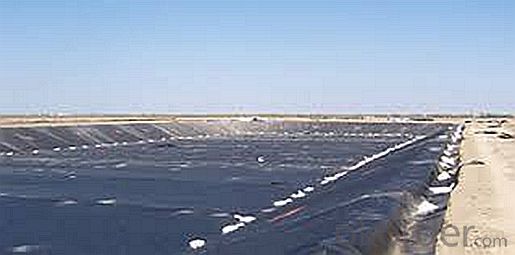- Understanding the Role of Geomembrane Liners in Waste Management
- Innovations in Geomembrane Liners for Water Management
- Geomembrane Liners: A Comprehensive Guide
- The Future of Geomembrane Liners in Civil Engineering
- Geomembrane Liners: Enhancing Landfill Stability
Manager:
WhatsApp:+86 177 0135 2670
Tel:+86 177 0135 2670
Email:marketing@okorder.com
Address:3rd Floor, No.2 Building, No.1 Sanlihe Road
Geomembrane Liners: A Comprehensive Guide
Geomembranes, also known as geosynthetic liners, are versatile materials used in various applications to provide a barrier against the passage of fluids, gases, and particulates. They are typically made from high-density polyethylene (HDPE), low-density polyethylene (LDPE), or polyvinyl chloride (PVC), and are available in various thicknesses and strengths. In this comprehensive guide, we will explore the world of geomembranes, their benefits, applications, installation, and maintenance.

The Wonders of Geomembrane Liners
Imagine a material that can prevent the leakage of hazardous substances, protect the environment, and ensure the integrity of various structures. That's what geomembranes are all about. They are the unsung heroes of the construction and environmental industries, working silently behind the scenes to keep things in check.
Why Choose a Geomembrane Liner?
Choosing a geomembrane liner is like choosing a reliable friend. It's there for you in times of need, offering protection and support. Here are some reasons why you might want to consider using a geomembrane liner:
- Environmental Protection: Geomembrane liners are excellent at containing contaminants and preventing them from seeping into the soil or water sources.
- Cost-Effective: They are a cost-effective solution compared to traditional lining methods, such as clay or concrete.
- Durability: Made from robust materials, geomembranes are designed to last, ensuring long-term performance.
- Versatility: They can be used in a wide range of applications, from landfills and ponds to reservoirs and canals.
Applications of Geomembrane Liners
Geomembranes are like the Swiss Army knives of the construction world. They are incredibly versatile and can be adapted to various situations. Some common applications include:
- Waste Containment: They are used in landfills and waste containment facilities to prevent the leakage of hazardous waste.
- Water Management: In reservoirs, canals, and ponds, geomembranes help manage water resources by preventing leakage and evaporation.
- Agricultural Applications: They are used in agriculture to line reservoirs and ponds for irrigation purposes, ensuring water is conserved and used efficiently.
- Construction: In construction projects, geomembranes can be used to create waterproof barriers in tunnels, canals, and other structures.
How to Install a Geomembrane Liner
Installing a geomembrane liner is like putting together a complex puzzle. It requires careful planning and execution. Here's a step-by-step guide to help you through the process:
1. Preparation: The surface must be prepared by removing any debris, rocks, or sharp objects that could puncture or damage the liner.
2. Measurement: Measure the area where the liner will be installed to ensure you have the correct size and shape.
3. Unrolling: Carefully unroll the geomembrane, taking care not to damage it or allow it to crease.
4. Securing: Use appropriate fasteners or adhesives to secure the liner in place, ensuring there are no gaps or wrinkles.
5. Seaming: Join the pieces of the liner together using heat welding or other approved methods to create a seamless barrier.
6. Inspection: Once installed, inspect the liner for any defects or damage, and repair as necessary.
Maintenance and Repair of Geomembrane Liners
Taking care of your geomembrane liner is like nurturing a garden. It requires regular attention and care to ensure it continues to perform its function effectively. Here are some tips for maintaining and repairing your liner:
- Regular Inspections: Conduct regular inspections to identify any signs of wear or damage.
- Prompt Repairs: Address any issues as soon as they are discovered to prevent further deterioration.
- Protection: Protect the liner from external factors such as UV radiation by using appropriate coverings or treatments.
- Cleaning: Keep the liner clean by removing any debris or buildup that could affect its performance.
The Future of Geomembrane Liners
As we look to the future, geomembranes are expected to play an even more significant role in our quest for environmental sustainability and efficient resource management. With advancements in materials and technology, we can expect to see geomembranes that are stronger, more durable, and even more versatile.
Conclusion
In conclusion, geomembrane liners are an essential tool in modern construction and environmental management. They offer a reliable, cost-effective, and versatile solution to a wide range of problems. By understanding the benefits, applications, and proper installation and maintenance procedures, you can ensure that your geomembrane liner serves you well for years to come. So, the next time you encounter a geomembrane liner, remember to appreciate the hard work and dedication it puts into keeping our world safe and secure.
- Previous:The Future of Geomembrane Liners in Civil Engineering
- Next:Innovations in Geomembrane Liners for Water Management
-
2024-12-05Geomembrane Liners: A Comprehensive Guide






